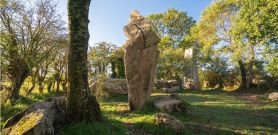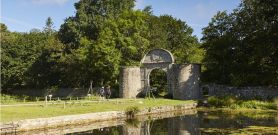Ria Etel
The most discreet “small sea”
Although smaller and less known than the Gulf of Morbihan, the Ria d'Etel has a similar look. It is a valley, partialy invaded by the sea and whose mouth opens on the famous "Barre Etel", a sandbar that moves with the winds and the tides and makes access at the river difficult. All around, the small villages of Erdeven, Belz, Plouhinec and Locoal Mendon do not lack character and offer many walks along marked trails.
-
-
-
-
Etel
-
-
-
Etel: Visiting the tuna fishing museum and a commented cruise on the estuary
The maritime character of Etel is obvious: a large fishing port for sardines and tuna fishing, you can still see the traces of old canneries and the old icehouse remains one of the town's emblematic buildings.
A visit to the Etel tuna fishing museum will teach you more about the fishing economy that has shaped the local people and landscapes. You will learn about the great shipwrecks but also the rescues and especially the very famous at the time rescue of Alain Bombard.
Many models and memories of this not so long ago time punctuate the visit. Note that around Christmas,the museum hosts a superb exhibition of maritime nativity scenes.
From the port of Etel, you can also plan a cruise on the estuary. It starts during the spring holidays until the end of September.
This one-and-a-half hour commented cruise will teach you more about this slighly unknown part of Morbihan : from its mouth with the famous "Barre d'Etel" to the picturesque islet of Saint-Cado, the Ria d'Etel remains one the most beautiful sites in the region.
-
-
-
-
-
Erdeven
-
-
-
Beaches, megaliths, mansions and chapels ...
The village of Erdeven is known both for its beautiful sandy beaches open to the Atlantic Ocean and a windsurfer's paradise, but also for its historical heritage.
Kerhillio beach is a very long family-friendly beach made of fine sand. It offers a breathtaking view of the Quiberon peninsula and Belle-Ile-en-Mer.
When the horizon is clear, we see the island of Groix. It is also THE beach for board sports: sand yachting, surfing and kite-surfing! Zones are set up to allow everyone to occupy the beach without interference.
-
-
-

Along the road linking Erdeven to Plouharnel, stands the second largest Breton megalithic site. You will discover many megalithic remains around footpaths:
- The standing stones of Kerzerho, the most important Breton megalithic site after Carnac.
The Kerzerho giants, standing 6 metres tall and weighin around 40 tons.
The dolmens of Mané-Bras and Mané-Croc'h.
The dolmen and the standing stone quadrilateral of Crucuno.
Despite the many assumptions around these stone giants, their mystery remains ...
All these sites are freely accessible and free all year.
- The standing stones of Kerzerho, the most important Breton megalithic site after Carnac.
-

Keraveon Park
Keravéon Park offers a peaceful walk and a botanical trail, a fitness trail, a playground for children and many picnic tables.
The castle itself is now a hotel residence. It is a stately home of the late 18th century protected by a triple enclosure.
Not far from here is Kercadio manor listed as a historical monument since 1998. Its history dates back to 1595. But in the early 18th century, the manor was rebuilt by an illustrious Breton family, who gave the buildings their current appearance while retaining the original tower. The property was sold as a national asset during the French Revolution and served as a base for the exploitation of surrounding farmland until 1976 when its vocation became and festive again.
In addition to the parish church, six chapels still remain in the town. Maintained by associations and the inhabitants, each of them bears the name of the village in which it is erected.
-
-
-
Belz and Saint Cado
-
-
-
-
-
Belz and Saint Cado
A charming hamlet built on an island at the heart of the river, Saint-Cado, connected to the mainland by a stone bridge, is a must, very popular with painters and photographers. It offers a superb point of view on the estuary, particularly at sunset ... On this small island, typical fishermen's houses and a Romanesque chapel. A place of pilgrimage, it houses a stone construction called Saint Cado's bed, which is said to cure deafness. Its stained glass windows tell the legend of the Saint. Also to discover, at the foot of the chapel and partly covered at high tide, Saint Cado fountain.
-











